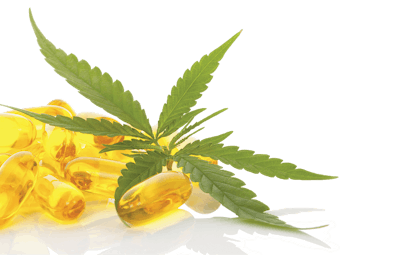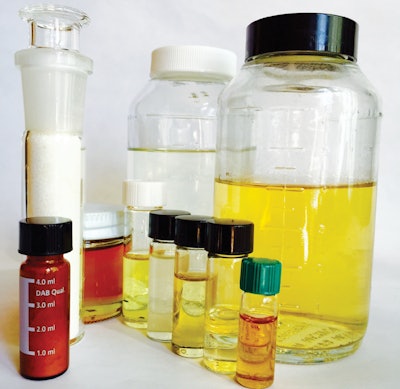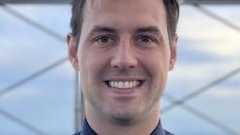
More than 483 compounds unique to cannabis have been identified, according to Rudolf Brenneisen (“Chemistry and Analysis of Phytocannabinoids and Other Cannabis Constituents”). There are more than 140 terpenoids and over 66 cannabinoids. Tetrahydrocannabinol, known to most as THC, is the most well-known cannabinoid. Another is cannabidiol, commonly referred to as CBD, which has become a very hot topic as of late.
Many ailments, conditions and diseases benefit from or are treated with CBD and CBD-rich whole-plant cannabis extracts. Among the more common is Dravet Syndrome, a brain malformation that causes epileptic seizures. Other conditions treated with CBD and THC whole-plant extracts are AIDS-related illnesses, Alzheimer’s disease, anorexia, anxiety, arthritis, ADD/ADHD, autism, bipolar disorder, brain tumors, cancer (treatment and prevention,) post-traumatic stress disorder (PTSD), to name but a few. And trust me, that’s the short list.
Traditionally, these conditions have been treated by smoking or vaporizing whole cannabis flowers/buds, or by orally consuming whole-plant extracts classified as Botanical Drug Substances (BDS) — or sometimes referred to as Phoenix Tears or Rick Simpson Oil (RSO) after Rick Simpson, the man who popularized its use. A BDS is preferably manufactured by soaking cannabis in ethanol alcohol to extract the desired compounds or by CO2 extraction, the method used by GW Pharmaceuticals (more on GW below). After removing the ethanol alcohol or refining the CO2 extract, the result is a cannabinoid- and terpenoid-rich extract that ranges in color from golden amber to dark, greenish-black.
But CBD-only extracts or purifications aid in or treat only a small segment of the aforementioned list of ailments. If CBD-only extracts alone were legalized, where would that leave the rest of the populous that requires a whole-plant extract that is rich in all cannabinoids and terpenoids? CBD-only (or single cannabinoid) extracts do not take into account the synergistic or “entourage” effect of the plethora of available cannabinoids and terpenoids, or their effect on the body’s endocannabinoid system. (I encourage you to search online for “endocannabinoid system” for information on this fascinating subject.)
Single cannabinoid drugs are not new. Marinol is a single cannabinoid, THC-based drug formulated in the early 1970s. It continues to be prescribed today to treat or prevent nausea and vomiting caused by cancer medications and to increase the appetites of people suffering from AIDS. But it is common knowledge in the cannabis community that Marinol delivers nowhere near the relief that raw cannabis flowers or whole-plant extracts deliver.
GW Pharmaceuticals also has produced and patented multiple uses for single cannabinoid-based pharmaceuticals/drugs. The University of California recently performed a clinical trial that showed a significant reduction in seizures utilizing a cannabis-based drug, which GW Pharmaceuticals named “Epidiolex.” It contains purified CBD, and no THC, or other cannabinoids or terpenoids.
From this clinical data, we can clearly see that all cannabinoids and terpenoids are not created equal and that there is much to learn regarding their chemistry, synergy and effects on the human body.
The CBD Landscape
More than 15 states have enacted CBD-only laws, which, in itself, is a remarkable accomplishment. But, CBD-only laws are flawed and misguided at best. Some states at least permit CBD products to be produced and sold; but many states, while offering certain “protections” for possession of CBD-rich products, don’t allow cultivation at all and provide no means for obtaining the products.
Florida forces growers to grow only CBD-rich plants that are virtually devoid of THC (specifying they contain no more than eight-tenths of 1 percent of THC), which is akin to suicide for the grower trying to compete in the soon-to-be open market.
Purified and super-refined forms of CBD are rapidly becoming readily available to the general public at increasingly lower and lower prices. Super-refined (95 percent) CBD crystallized into powder is currently selling wholesale at $35,000 per kilogram. CO2-extracted (85 percent) CBD oil is selling wholesale for $45,000 per kilogram. Super-refined powder is being produced in the Czech Republic and other countries with lower production costs.
CBD and the Future
But this also opens up another topic: Where to source CBD-rich cultivars? There is no “store” where one can purchase a 10-pound bag of CBD-rich seeds capable of producing elevated levels of CBD. Therefore, options are limited. Choices are:
- Meticulously collecting and replicating hemp seeds that may contain CBD, or
- Sourcing one of the popular re-classified (from drug to hemp) cultivars and cloning or replicating that en masse.
Seeds are not available in bulk, so that means:
- selecting
- breeding
- analyzing
- cloning
- tissue culturing or
- genome replication (not genetic modification) on a large scale.
There are many other implications to consider as well. Big implications. The trajectory of cannabis is on the brink of a transformation.
GW pharmaceuticals has filed many patents, among them a patent on CO2 extraction. And whatever it did not patent, someone else surely has. There are many other components to GW’s patents that have far-reaching implications for their use or intended use. These are considered intellectual property (IP) or proprietary methodologies, and a considerable number of them exist.
The University of Mississippi, ElSohly Laboratories Inc. and RTI International (formerly Research Triangle Institute) also have filed patents, as have privately held companies, e.g., the THCA isolation patent. And these are mostly process or application patents.
The most interesting patents to be filed today are GW Pharmaceuticals patent US 20130059 018 A1 (a treatment for cancer) and U.S. government patent US 6630507 B1 (cannabinoids as antioxidants and neuroprotectants) for treating stroke and trauma, and neurodegenerative diseases.
While it may be true that these patents are difficult and expensive to enforce today, they will come into play as the industry becomes more legalized and regulated. When legal, successful businesses begin commercial sales they will inevitably be in violation of someone’s IP or patented methodologies. When that happens, the offending company can choose licensing or litigation.
But before it gets to that point, there is a dirty trick that will take some of you aback. Private sector companies have been legally forbidden to possess cannabis or to engage in studies on cannabis or its extracted compounds in clinical animal and human trials because cannabis is a Schedule I drug. Traditionally, the National Institute on Drug Abuse (NIDA) and the Drug Enforcement Administration (DEA) have denied and prevented any and all cannabis-related research.

The hypocrisy is huge. To be considered a Schedule I drug, that drug must have no medicinal value. Again, cannabis is considered a Schedule I drug, yet the U.S. government owns a patent that clearly states the medicinal value of cannabis, and it granted the GW Pharmaceutical patent for the treatment of cancer.
Many politicians ignorantly parrot quotes regarding rescheduling cannabis to a Schedule II drug to allow for the real testing and research of cannabis to begin. But cannabis should not be rescheduled. It should be descheduled altogether.
Rescheduling cannabis to a Schedule II drug allows pharmaceutical companies, universities, corporations and others to legally obtain and research every aspect of cannabis, to perform accepted clinical trials, to investigate and research, all of which will lead to proprietary uses and methods, then patents. This is how Big Pharma will monopolize and profit from cannabis-based pharmaceuticals. From formulation to application, “further study” and rescheduling will lead to patenting proprietary cannabis-based products of the future.
Many incredible scientists, doctors and researchers, such as Dr. Raphael Mechoulam, Dr. Donald Abrams, Dr. Sue Sisley and Dr. Mahmoud ElSohly have spent their lives in pursuit of cannabis research. And, fortunately, most of them have received funding to perform their work. But, in the near future, new researchers allowed under Schedule II to legally study and perform clinical trials will inevitably have to justify their research results and findings, and they will need to show a return on investment (ROI) for the research sponsors.
The ROI, I'm guessing, will ultimately come from the IP and patents, whether from use or licensing.
I suspect all cannabinoid and terpenoid products for medical applications are now or will be protected and patented in the next five to 10 years. Keeping in mind that China has filed more than 300 cannabis patents, most products manufactured and sold in dispensaries today will someday violate someone's IP.
The purpose of this article is not to disparage CBD or its use in any way. Rather, I hope to shine a light on the shortcomings of CBD-only laws and to elucidate the value of all cannabinoids and terpenoids, and the need for descheduling so that anybody and everybody can study the properties and possibilities (including medical) of the cannabis plant — the flowers/buds or concentrated forms. Cannabis should be available to anyone who needs or wants it. Simple.
Corporate entities will produce proprietary cultivars utilizing patented intellectual property to produce products that use even more of their patents — which means the cannabis farmers of today must do everything possible to ensure that they retain the right to grow cannabis on their land and maintain a way of life for the family farmer. The general public does not want corporate cannabis; they want safe, high-quality products (including extracts) manufactured with loving care to their full potential.
As I’ve discussed before, hopefully we will ultimately have a two-tier system, with corporate product for pharmaceuticals and boutique family farm products for everybody else. The consumer will decide what is best for them.
















